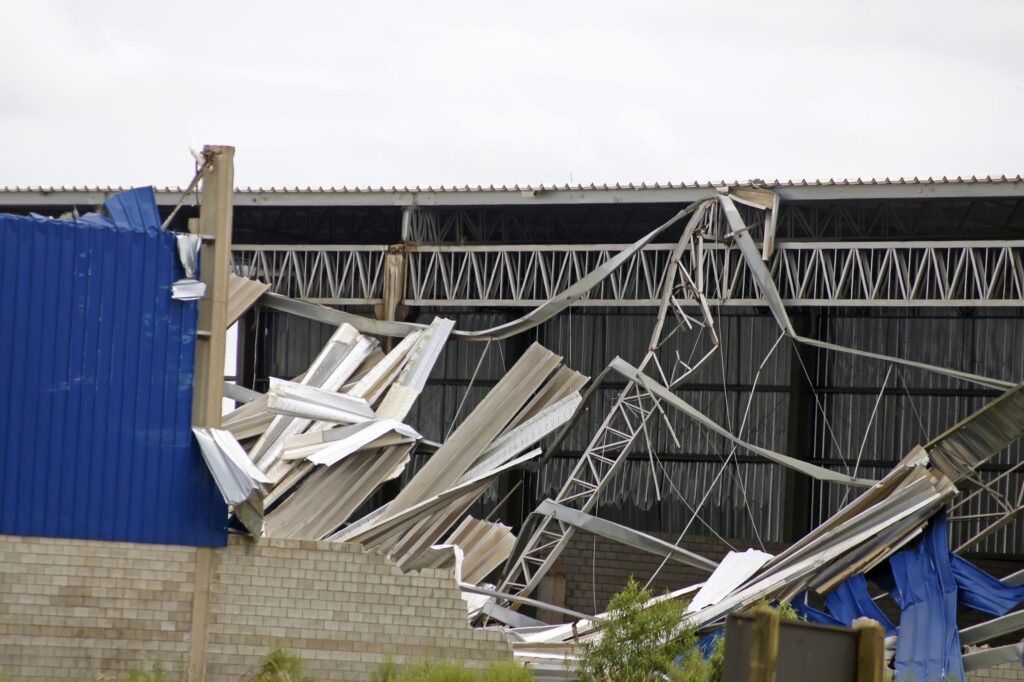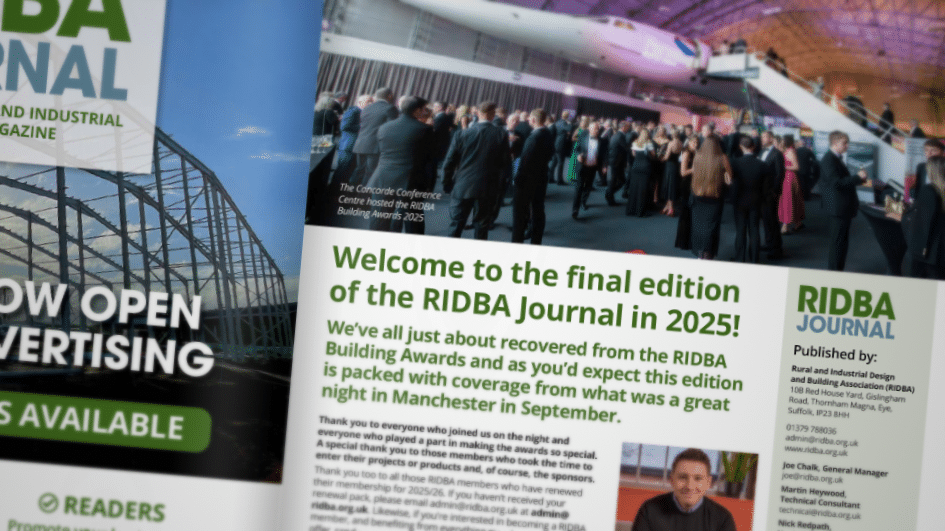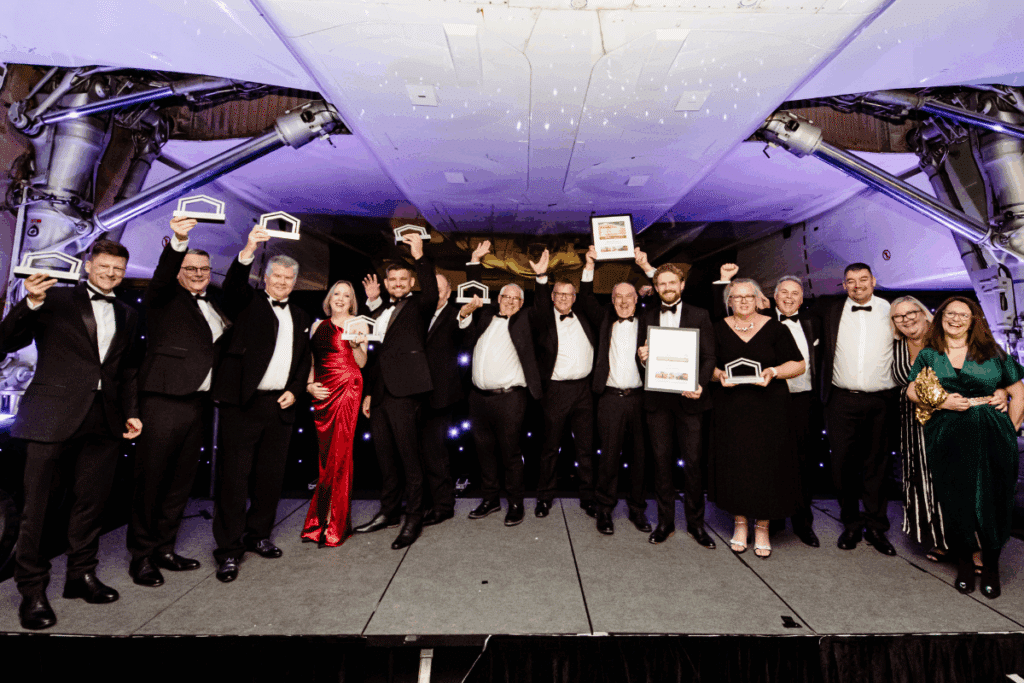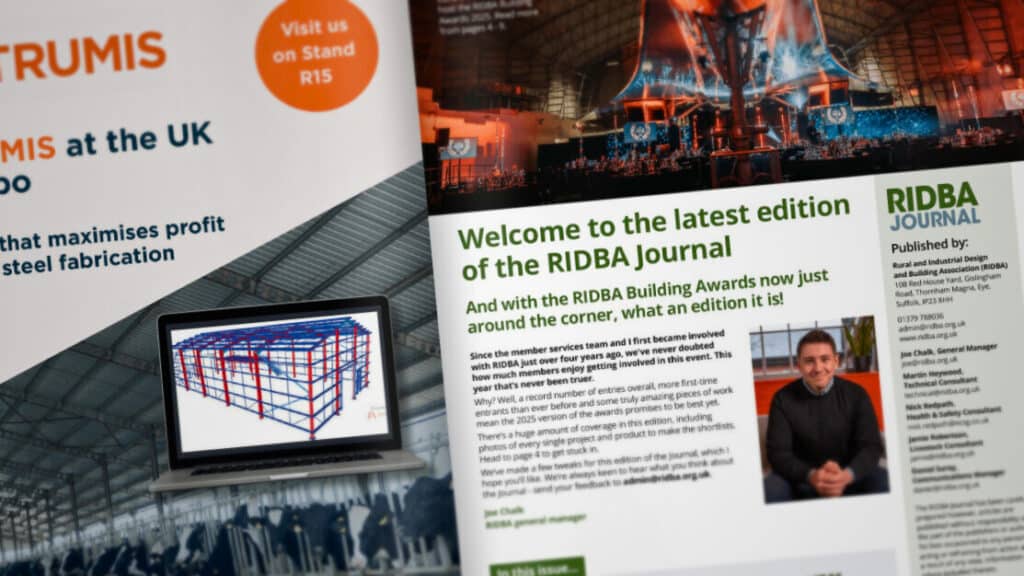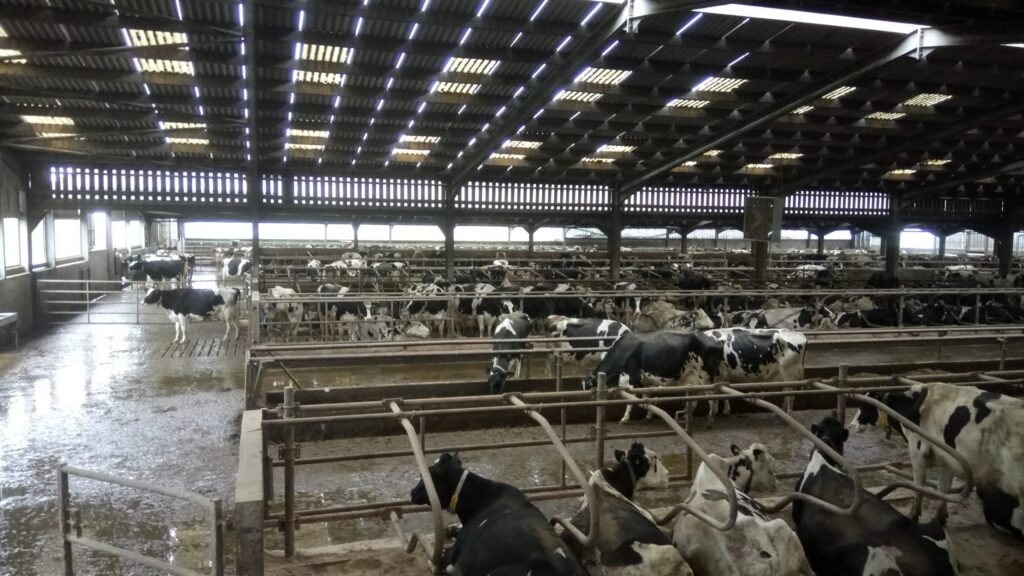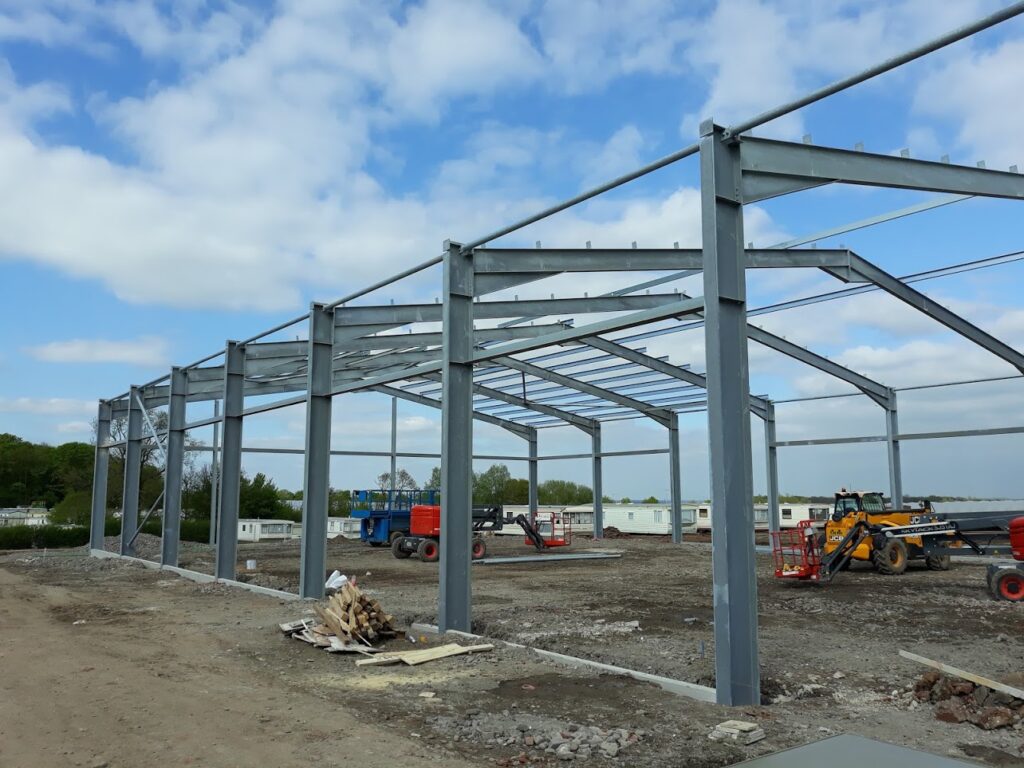In the previous issue of the RIDBA Journal I wrote about wind loading on buildings and how to design with it in mind.
The article considered the many factors that affect the speed of the wind as it approaches a building, or other obstruction, and the need to perform bespoke wind loading calculations for each building. The article also referred to the Eurocode standard for wind loading – BS EN 1991-1-4 – and the availability of wind loading software. In this second article, the focus switches from the wind to the buildings and considers how the structural frame, cladding and attachments can be designed to withstand the winter storms.
The structural frame
All structures, including buildings, must be designed with sufficient stability to withstand horizontal forces, such as wind loading, without collapse or excessive deflection. The means of providing this stability will depend on the type of building and any constraints placed on the structure by the building use. For example, the need for a clear opening without bracing. Resistance to horizontal forces is generally achieved through one of the following methods:
- Bracing system
- Concrete core or shear wall
- Moment-resisting connections
Of these options, the use of a bracing system is probably the most common in multi-storey buildings or in single storey buildings where large clear openings are not required. Cores and shear walls tend to be used in tall buildings where bracing would be obtrusive and where a service core already exists for the lifts and a stairwell. Moment-resisting connections are used where clear openings are needed in buildings and where a core or shear wall would be impractical, such as warehouses and agricultural buildings. Portal framed buildings typically combine two means of stability. In the plane of the portal frames, wind loading is resisted by the hunched connections between the columns and the rafters, while bracing in the walls provides the resistance out of plane.
It is worth emphasising that the bracing system, where it is used, is as important as any of the other structural members in the frame. Bracing members are not optional extras that farmers can remove to make a side entrance to their cow shed. If a bracing member needs to be moved, a qualified structural engineer should be consulted to ensure that an alternative means of stability is provided.
The bracing and haunches prevent the building from collapsing sideways, but what about the whole building overturning or lifting off the ground? This is the job of the column bases and their holding down bolts, although from the way they are often treated on site, one could be mistaken into thinking they are little more than ornamental features.
A typical column base consists of a steel plate, known as the base plate, welded to the base of the column, and connected to the concrete foundation by four holding down bolts. Although two holding down bolts are likely to be adequate to resist the design loads, four should always be used for the sake of safety during erection. When the wind blows on the side of the building, it simultaneously attempts to move the building sideways and overturn it. This overturning moment is resisted by a downward reaction on one set of columns and an upward reaction on the other side of the frames. Consequently, column bases need to be designed to carry upward and downward vertical loads in additional to horizontal base shear.
Downward vertical loads are taken directly into the ground in compression, with the base plate spreading the load to limit the pressure on the concrete foundation. Vertical uplift loading is taken in tension through the columns into the holding down bolts and is ultimately resisted by friction between the foundation and the surrounding soil. Horizontal loads are taken into the foundations by the bolts acting in shear. The holding down bolts should be specified to resist the uplift on the column base in tension and to transfer the horizontal forces in shear. The size of bolt will depend on the magnitude of these forces, but M20 is typical for small and medium size sheds. Remember that any column base is only as good as the foundation to which it is attached, so take great care to ensure the foundations are adequate to hold the building down in the event of a storm.
The final structural issue to consider is the impact of wind uplift on portal frame rafters, which in some cases can be the dominant design condition. Moreover, due to their slenderness, the rafters are usually susceptible to lateral-torsional buckling and have to be restrained at regular intervals along their length. Under downward loading (e.g., self-weight and snow), the critical compression flange is mostly at the top of the rafter (it is at the bottom close to the haunch), so is directly restrained by the purlins. Under wind uplift, however, the opposite is true and, unless correctly detailed, the compression flange will be unrestrained and at risk of buckling.
The building envelope
So far, this article has only considered the impact of the wind on the building structure, but quite often it is the building envelope and decorative elements such as fins, awnings and signs that bear the brunt of any storm. While these items are not normally classed as structural, i.e. their failure will not result in the collapse of the building, they are often essential to the serviceability of the building and their detachment from the building can be extremely dangerous (think of thin metal sheets flying through the air). Designing the roof, wall cladding and any attachments for the appropriate wind loading is therefore as important as designing the structural frame.
Building designers will often assume that the wind loading is shared across the whole building when designing the structure, but this approach is not valid when it comes to the building envelope due to the significance of local wind forces. Although it is reasonable to assume that the wind blowing towards a building is uniform, once it reaches the building and begins to flow over and around it, the wind pressures can vary enormously from one location to another. This variation in wind pressures is dealt with in the design codes using ‘wind zones’.
Large signs, light fittings and any other wall-mounted attachments require special consideration, since the wind force will need to be taken into the cladding and then back into the structure. This poses two potential problems. Firstly, the bracket or rail system supporting the attachment must be strong enough to safely transmit the wind load, which in some cases could be significant. Secondly, where these brackets attach to the cladding system, there will be a concentrated local force on the cladding. If the connection is not detailed correctly, this could result in local failure of the cladding. It is always advisable to contact the cladding manufacturer for specialist technical guidance in these circumstances.
Conclusion
Storms can release great destructive power, which all too frequently causes damage to buildings. This is, however, largely avoidable if building designers take the time to calculate the wind loading on the building and correctly detail the structure and envelope to ensure that the structure is adequately braced and held down and that the cladding is securely fastened to the structure.
Dr Martin Heywood
RIDBA Technical Consultant
